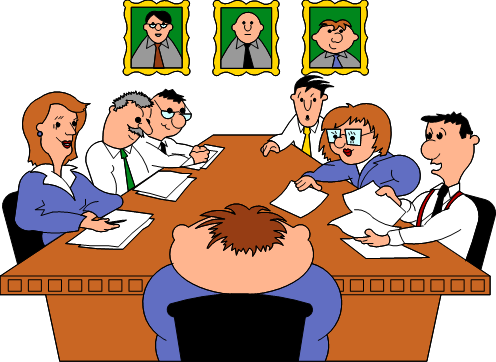Getting tired of unproductive meeting behaviours? Four sources of inspiration that’ll rekindle your love


Derek Robertson , CEO
(Chartered FCIPD, MCMI, MInstLM, NLP Practitioner and Coach)
Author of The Great Cape Escapade (A Fable about effective meetings)
6 min read
Introduction
Meetings are essential to businesses. It’s where people ought to do what they do best:
- Harness their collective creativity to solve problems
- Bond as a group
- Create and commit to actions
Sadly, all the stats will tell you that poor meetings is a virus that’s infected the global business community. With 55 million meetings happening every day and the HBR quoting 71% of leaders saying their meetings are unproductive and inefficient, we get a picture of wasted time, energy, resources, angst, brand harm and so on.
Here is practical help with four common participant behaviours that can derail your meetings.
We all behave the way we do for a reason. It comes from our formative years and influences, workplace custom and practice, internal politics and our current state (just missed a promotion, toothache, etc.)
The shouter
A mentor recounted to me the case of a new colleague who interrupted and raised her voice throughout a whole meeting. The participants drew conclusions that their new colleague was rude, inappropriate and ignorant. The chair discovered from the new colleague that she grow up in a household of ten people. The only way to be heard was to shout the loudest.
The new colleague, until coached, was simply behaving according to her own behaviour norms. Like you and me she was a normal person, worked hard, raised money for charity and sometimes a bit careless.
What is an effective meeting?
It’s one that achieves its purpose, finishes on time or earlier and has the participants feeling good about the experience.
And it improves the chair person’s personal brand. If you run meetings with external folks it adds shine to your organisation’s brand.
Four meeting behaviour traits
Speech-maker
| What they do | Seem incapable of making their point succinctly. They call a spade and gardening implement with three parts: the blade and the handle. Typically the blade is made of forged carbon steel, the stock from wood and the handle plastic. I remember I had a spade and it . . . |
| Meeting impact |
Meeting overruns Participant frustration Chair loses authority if they don’t address the speech maker The speech maker loses credibility |
| How to manage |
Talk with them privately. Reassure that they add value (they wouldn’t be at the meeting otherwise). Be open about what you have noticed. Be specific. Offer to go through the next couple of agendas with them beforehand to have them prioritise and road test their contributions. Encourage them to think prepare in ways like: The main three points are . . . |
Details
| What they do |
Probe for details beyond when the body of the meeting are satisfied Struggle to go with the flow or mirror the group excitement over an idea Logic focused always want more data |
| Meeting impact |
Meeting gets bogged down in minutia. Participant boredom Meeting becomes sluggish |
| How to manage |
Talk with them in private about how valuable their contribution can be and how too much of anything is a bad. Encourage them to think about when we have enough details to decide and when they become a diminishing return. Ask them to become aware of participant reactions to their contributions to sense their relevance |
Hidden Agenda
| What they do |
Make contributions, questions and behave in ways that further their agenda which isn’t always in step with the meeting’s purpose. At its worst they load the ‘meeting meltdown gun’ and then set things in motion for others to fire them. |
| Meeting impact |
Participants become more guarded and can fall into ‘points scoring’ against other participants. The meetings descend into turf wars at the expense of achieving the meetings purpose. Ultimately everyone is dissatisfied. |
| How to manage |
You have to be 100% sure before you make accusations. Before that ask questions that make it clear you know that there may be other motivations for the person making the contributions they do. For example, “I see you want to revisit where we build the new plant. Your brother is Mayor of one of the towns is that right?”. |
Higher Grade
| What they do |
They ought to be an equal partner participant Either by personality, behaviour or dominant culture they can have disproportionate power in meetings. |
| Meeting impact |
If Higher Grade’s way of working is to use their positional power the risk is other participants defer to him/her. And the chair can lose control of the meeting. The chair can seek approval from Higher Grade either directly or with their non-verbal communication. Participants defer to Higher Grade too often Too many participants hold back from full involvement |
| How to manage |
Extremely challenging, especially if Higher grade is unaware of their effect on the meeting dynamic and its outcomes. Speak to the person one to one. Make sure to have plenty evidence to support your assessment. Confirm you and Higher grade’s value to achieving the meeting’s purpose and make suggestions for how they can best contribute. For example every time someone defers to them Higher grade bats it back with something like, “I’m more interested in what you folks think we ought to do.” |
Your takeaway
Assuming you too want to have consistently effective and fulfilling meetings remember three things:
- What makes an effective meeting
- Your touchstone for all of your actions is achieving the meetings purpose
- Speak with participants privately and only when you have factual examples.
Final thought
Cure the effective meeting disease in your organisation and you will be a boardroom hero.
Your next action
Check out the following sources and downloads:
- A meetings calculator to work out the potential for ROI at your organisation.
- Check out our Meetings book here
- Download our Ultimate Guide to Meetings

